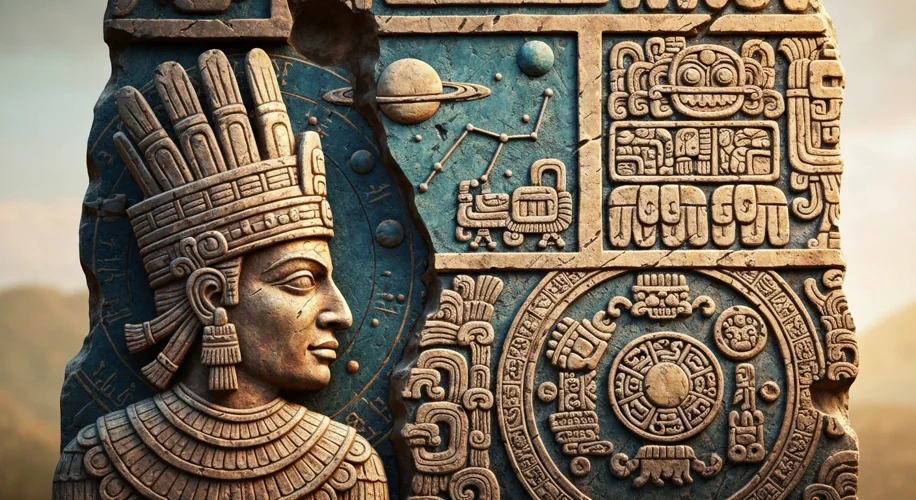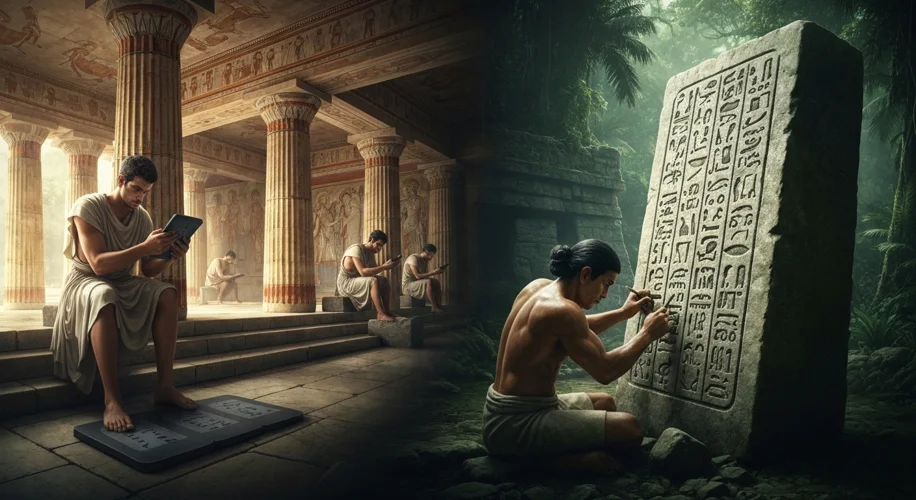The air in ancient Greece, around the 13th century BCE, hummed with a vibrant, yet ultimately fragile, form of communication. It was the age of the Mycenaeans, a Bronze Age civilization that flourished with palaces, intricate artistry, and a unique script known as Linear B. This syllabic script, painstakingly deciphered in the mid-20th century, unlocked a world of administrative records, palace inventories, and religious offerings, painting a vivid picture of a sophisticated society.
But as the Bronze Age waned, so did the knowledge of Linear B. Around 1200 BCE, a catastrophic series of events—likely involving invasions, internal strife, and perhaps natural disasters—led to the collapse of Mycenaean civilization. Palaces were destroyed, trade routes severed, and the complex administrative structures that supported the script crumbled. For centuries, Greece entered what is often termed a “Dark Age,” a period where written records become scarce, and much of the previous civilization’s achievements seemed lost to time.
Then, a new dawn broke. Around the 8th century BCE, the Greek world began to re-emerge, transformed. With it came a new writing system, one that would become the ancestor of our own alphabet: the Greek alphabet, adapted from the Phoenician script. This was not a rediscovery of Linear B; it was the adoption of something entirely different. Greece had lost a writing system, a complex and uniquely Aegean creation, only to embrace and adapt an alien one centuries later. This fascinating episode begs a crucial question: are there other historical parallels to this dramatic loss and reinvention of written language?
History, it turns out, offers a compelling, albeit different, echo of this phenomenon in the Maya civilization of Mesoamerica. Like the Mycenaeans, the Maya developed a sophisticated and intricate hieroglyphic writing system. For centuries, their scribes recorded dynastic histories, astronomical observations, religious rituals, and intricate calendrical calculations on stone monuments, pottery, and bark-paper books known as codices.

The Classic Maya period, flourishing between 250 and 900 CE, was a golden age of Maya art, architecture, and intellectual achievement, all deeply intertwined with their writing. However, around the same time the Mycenaean script faded, the Classic Maya civilization experienced a widespread societal collapse. The reasons are complex and debated, involving factors like overpopulation, environmental degradation, prolonged drought, endemic warfare, and the breakdown of political authority. As Maya cities were abandoned and their monumental constructions ceased, the intricate tradition of carving hieroglyphs also began to wane in many regions.
While not a complete disappearance akin to Linear B, the Classic Maya collapse led to a dramatic decline in the use and maintenance of their complex hieroglyphic system in the southern lowlands. For centuries following the collapse, knowledge of how to read and write these elaborate glyphs diminished. While Maya scribal traditions continued in some Postclassic centers, the full florescence of the Classic period script was largely lost to subsequent generations. When the Spanish conquistadors arrived in the 16th century, they encountered Maya peoples who still possessed a script, but one that had evolved and was primarily used for everyday communication and religious purposes, rather than the grand historical and astronomical narratives of the Classic era.
The Spanish, in their conquest, actively suppressed indigenous cultures and religions, including Maya literacy. Many of the precious Maya codices were destroyed, further erasing the detailed knowledge contained within them. While elements of the Maya writing system survived, and indeed have been significantly deciphered in modern times, the continuity of the system was severely disrupted. This disruption meant that the profound connection between Maya society and their unique script, as it existed in the Classic period, was broken.
In the subsequent centuries, without the direct transmission of knowledge, the ability to read and interpret the Classic Maya hieroglyphs became a lost art, a silent language etched in stone. It wasn’t until the late 20th century that dedicated scholars, painstakingly comparing inscriptions with surviving codices and linguistic knowledge, managed to unlock the secrets of this complex script, much like the decipherment of Linear B.
In both the Greek and Maya cases, we see cultures that developed sophisticated, unique writing systems, only to witness their decline and near-disappearance due to profound societal upheavals. Greece, after the Mycenaean collapse, moved to an entirely new, borrowed script. The Maya, while their script survived in modified forms, experienced a severe rupture in its continuity and complexity, requiring a monumental effort centuries later to reawaken its dormant meaning.
These instances highlight the fragility of written knowledge. They serve as potent reminders that the ability to read and write, so often taken for granted in our modern world, is not an eternal flame but a flame that can be, and has been, extinguished by the winds of history. The silence of the scribes, whether in the Aegean or the Mesoamerican jungles, speaks volumes about the delicate balance between civilization, knowledge, and the relentless march of time.

